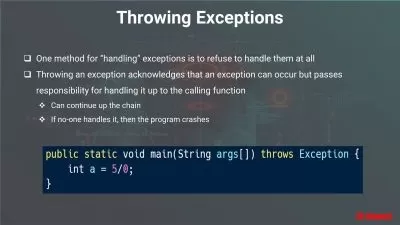Implementing Design Patterns Using Java 8 Lambda
Jose Paumard
3:08:19
Description
Being able to design simple and fluent API to make your business applications easier to read is what you will get by following this course. All the tools brought by Java 8 to implement the standard Design Patterns are covered with many live demos.
What You'll Learn?
As a Java developer, mastering the standard design patterns from the Gang of Four book allows you to create better business applications, more robust and easier to maintain in the long run. In this course, Implementing Design Patterns Using Java 8 Lambda, you will learn how you can leverage the tools Java 8 added to the platform to write better code: easier to read and with better performances. These tools bring several functional programming paradigms to the Java language: function chaining and composition, and partial application. First, you will study how these tools have been used to improve the JDK itself through several examples including the Comparator API. Then you will see how you can use the same approach to implement several patterns on live demo examples, including the Factory, the Builder, the Singleton, and the Registry, following the principles of clean code. You will even implement the Visitor pattern in a functional and non-intrusive way. Finally, you will apply those principles to create your own Validator, purely functional and fluent. Mastering these techniques will help you creating performant, readable and versatile Java applications.
More details
User Reviews
Rating
Jose Paumard
Instructor's Courses
Pluralsight
View courses Pluralsight- language english
- Training sessions 66
- duration 3:08:19
- level average
- Release Date 2023/10/11










